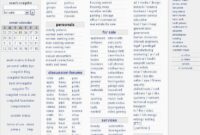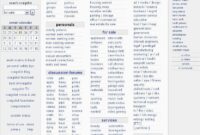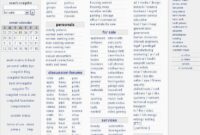Bedliners For Pickup Trucks: Your Ultimate Guide to Protection and Performance pickup.truckstrend.com
The pickup truck bed is a workhorse, a versatile space designed to haul everything from lumber and tools to camping gear and groceries. However, without adequate protection, this essential area is highly susceptible to damage. Scratches, dents, rust, and general wear and tear can quickly diminish the appearance and value of your truck. This is where a bedliner comes in – an indispensable accessory that acts as a robust shield, preserving your truck’s bed and enhancing its functionality. Far more than just an aesthetic upgrade, a quality bedliner is an investment in your truck’s longevity, resale value, and your peace of mind.
This comprehensive guide will delve into the world of pickup truck bedliners, exploring their importance, the various types available, critical factors to consider when choosing one, and practical advice to help you make an informed decision.
Bedliners For Pickup Trucks: Your Ultimate Guide to Protection and Performance
Why Your Pickup Truck Needs a Bedliner: The Core Benefits
Before diving into the specifics, let’s understand the fundamental reasons why a bedliner is a non-negotiable accessory for any pickup truck owner:
- Protection Against Physical Damage: This is the primary function. Heavy, sharp, or abrasive cargo can easily scratch, dent, and gouge the painted metal surface of your truck bed. A bedliner provides a durable barrier, absorbing impacts and preventing direct contact with the underlying metal.
- Corrosion Prevention: Scratches and chips in the paint expose the bare metal of the truck bed to moisture, chemicals, and road salt, leading to rust and corrosion. Bedliners seal and protect the bed, preventing these elements from initiating destructive rust processes.
- Enhanced Cargo Stability: Many bedliners, especially spray-on and rubber mat types, feature textured or non-slip surfaces. This significantly reduces the movement and sliding of cargo during transit, protecting both your goods and the truck bed itself from impact damage.
- Improved Aesthetics and Resale Value: A pristine truck bed looks better and signifies a well-maintained vehicle. A quality bedliner, free from significant damage, contributes positively to your truck’s overall appearance and can significantly boost its resale value by demonstrating care and preventing costly repairs.
- Noise Reduction: Some bedliner types, particularly spray-on and thicker rubber mats, can help dampen road noise and vibrations, contributing to a quieter ride, especially when the bed is empty.

Understanding the Different Types of Bedliners
The market offers a variety of bedliner types, each with its own set of advantages and disadvantages. Understanding these differences is crucial for selecting the best fit for your specific needs and budget.
1. Drop-in (Plastic/Polyethylene) Bedliners
Description: These are pre-formed, rigid plastic liners that "drop" directly into the truck bed. They are typically made from high-density polyethylene (HDPE) and are designed to fit specific truck makes and models.

Pros:
- Affordable: Generally the most budget-friendly option.
- Easy Installation: Can often be installed by the owner in minutes, requiring no special tools.
- Good Impact Protection: The rigid plastic offers a strong barrier against dents and dings from heavy, blunt objects.
- Removable: Can be taken out for cleaning or if you need to access the bare truck bed.

Cons:
- Can Trap Moisture: A significant drawback is the potential for water and debris to get trapped between the liner and the truck bed, leading to rust if not regularly removed and cleaned.
- Less Custom Fit: While molded for specific trucks, they rarely fit perfectly snug, allowing for movement and abrasion against the truck’s paint.
- Slippery Surface: The smooth plastic surface can cause cargo to slide around easily.
- Aesthetic: Can sometimes look less integrated and more utilitarian than other options.
2. Spray-on (Polyurethane/Polyurea) Bedliners
Description: These liners are applied directly to the truck bed as a liquid coating that hardens into a durable, textured, and seamless protective layer. They are typically made from polyurethane or polyurea compounds.
Pros:
- Permanent Bond & Custom Fit: Adheres directly to the truck bed, creating a seamless, custom-fit barrier that won’t trap moisture or shift.
- Excellent Corrosion Protection: Seals the entire bed, preventing rust and chemical damage.
- Superior Anti-Slip Properties: The textured surface provides exceptional grip, preventing cargo from sliding.
- Extreme Durability: Highly resistant to scratches, abrasions, impacts, and chemicals.
- Sound Dampening: Can reduce road noise and vibrations.
- Enhanced Aesthetics: Offers a clean, factory-installed look.
Cons:
- Higher Cost: Generally the most expensive option due to material and professional application.
- Permanent: Once applied, it cannot be easily removed without significant effort.
- Professional Application Recommended: Proper application requires specialized equipment and expertise for optimal results and longevity. DIY kits exist but often yield inferior results.
- UV Fading: Some early formulations could fade over time due to UV exposure; modern liners often include UV stabilizers.
3. Mat Bedliners (Rubber/Composite)
Description: These are thick, heavy-duty mats, typically made from recycled rubber or composite materials, designed to cover only the floor of the truck bed.
Pros:
- Excellent Cargo Grip: The rubberized surface provides superior friction, keeping cargo firmly in place.
- Affordable: More budget-friendly than spray-on options, often comparable to drop-ins.
- Easy Installation & Removal: Simply lay it down; easy to remove for cleaning.
- Good Impact Absorption: Protects the bed floor from dings and dents.
Cons:
- Limited Protection: Only covers the bed floor, leaving the sidewalls and tailgate unprotected.
- Can Trap Moisture: Similar to drop-ins, moisture can get trapped underneath if not periodically removed and dried.
4. Bed Rugs/Carpet Liners
Description: These liners are made from durable polypropylene or carpet-like materials, often with a cushioned foam backing. They offer a soft, comfortable surface.
Pros:
- Gentle on Cargo: Ideal for delicate items that might be scratched by harder surfaces.
- Comfortable: Great for kneeling or sitting in the bed.
- Insulating: Can help insulate the bed, useful for camping or carrying temperature-sensitive items.
- Easy to Clean: Often resistant to stains and can be hosed down.
- Good Looks: Provides a clean, finished look to the truck bed.
Cons:
- Less Durable for Heavy-Duty Use: Not ideal for hauling sharp, abrasive, or extremely heavy materials regularly.
- Can Absorb Liquids: While resistant, prolonged exposure to certain liquids or chemicals can cause issues.
- Higher Cost: Typically more expensive than drop-in or mat liners.
Choosing the Right Bedliner for Your Needs
Selecting the ideal bedliner involves considering several factors:
- Primary Use:
- Heavy-Duty Work (construction, landscaping): Spray-on is the best choice for maximum protection and durability.
- Light to Moderate Hauling (home improvement, occasional furniture): Drop-in or a high-quality mat can suffice.
- Recreational/Delicate Cargo (camping, sports gear, antiques): A bed rug or mat is ideal for cushioning.
- Budget: Determine how much you’re willing to invest. Remember that a more expensive spray-on liner can save you money on rust repair and boost resale value in the long run.
- Desired Level of Protection: Do you need full, seamless protection, or just floor coverage?
- DIY vs. Professional Installation: Are you comfortable with a quick DIY install, or do you prefer the guaranteed quality of professional application?
- Climate: If you live in a wet or humid environment, a spray-on liner’s moisture-trapping prevention is a significant advantage.
- Aesthetics: How important is the look and finish of the bedliner to you?
Installation & Maintenance
Drop-in & Mat Liners:
- Installation: Simply clean the truck bed thoroughly, ensure it’s dry, and then place the liner. Some drop-ins may require minor drilling for fasteners.
- Maintenance: Periodically remove the liner to clean out trapped dirt, debris, and moisture from the truck bed underneath. Wash the liner with soap and water.
Spray-on Liners:
- Installation: This is a professional job. It involves thorough cleaning, sanding, masking, and then spraying the multi-layer coating. Proper surface preparation is critical for adhesion and longevity.
- Maintenance: Generally low maintenance. Wash with soap and water. Avoid harsh chemicals or abrasive cleaners. Consider applying a UV protectant if your liner doesn’t have robust UV inhibitors, especially if your truck is frequently exposed to direct sunlight.
Bed Rugs:
- Installation: Usually involves hook-and-loop fasteners (Velcro) to secure it to the bed walls and floor. Clean and dry the bed first.
- Maintenance: Can be vacuumed or hosed down. Allow to air dry completely to prevent mildew.
Common Challenges and Solutions
- Moisture Trapping (Drop-in & Mats): Regularly lift and clean underneath these liners, especially after rain or washing, to prevent rust.
- Cargo Slipping (Drop-in): Consider adding a rubber mat on top of the drop-in liner or investing in cargo management accessories like tie-downs or cargo bars.
- Fading (Spray-on): Choose a reputable brand that incorporates UV stabilizers. If fading occurs, some companies offer restoration products or re-application services.
- Cost: While spray-on liners have a higher upfront cost, consider them a long-term investment that protects your truck’s value and prevents future repair expenses.
Practical Advice and Actionable Insights
- Research Specific Brands: Not all bedliners are created equal. Read reviews for specific brands and types, especially for spray-on liners, to gauge their durability and customer satisfaction.
- Consider Your Truck’s Model: Bedliners are typically model-specific. Ensure you purchase one designed for your exact truck make, model, and bed length.
- Inspect Before Purchase (Drop-ins): For drop-in liners, check for any manufacturing defects, warps, or sharp edges that could potentially damage your truck.
- Ask About Warranty (Spray-on): Reputable spray-on liner applicators offer warranties (often lifetime) against bubbling, peeling, or fading.
- Combine Protection: For ultimate protection, some truck owners opt for a spray-on liner on the bed walls and tailgate, combined with a rubber mat on the floor for extra grip and cushioning.
Bedliner Price Table
Please note that prices are approximate and can vary significantly based on truck size, brand, location, installation complexity (for DIY vs. professional), and specific features (e.g., UV stability, texture).
| Bedliner Type | Price Range (USD) | Key Features & Considerations | Installation Difficulty | Durability Rating | Best For |
|---|---|---|---|---|---|
| Drop-in (Plastic) | $150 – $350 | Hard plastic shell, good impact protection, easy DIY. Can trap moisture, less grip, potential for abrasion underneath. | Easy (DIY) | Moderate | Budget-conscious, light to moderate hauling, temporary protection. |
| Spray-on (Polyurea) | $400 – $800+ | Permanent bond, seamless, custom fit, superior grip, chemical/corrosion resistance. Professional application recommended. | Professional | Excellent | Heavy-duty use, maximum protection, long-term investment, high resale value. |
| Mat (Rubber/HDPE) | $80 – $200 | Thick, heavy rubber/composite mat for bed floor. Excellent grip, easy to remove/clean. Limited side/tailgate protection. | Very Easy (DIY) | Good | Light-duty, delicate cargo, added grip, quick solution, combines with other liners. |
| Bed Rug / Carpet | $200 – $450 | Soft, cushioned, carpet-like material. Gentle on cargo, comfortable for kneeling. Less suitable for very heavy or sharp objects. | Easy (DIY) | Moderate | Delicate cargo, recreational use, camping, clean appearance, comfortable. |
| Notes: | Prices exclude sales tax. Professional installation costs are usually included for spray-on liners. DIY spray-on kits are available but vary widely in quality and ease of application. Larger truck beds (e.g., long beds, dually) will generally cost more. |
Frequently Asked Questions (FAQ)
Q1: Do I really need a bedliner for my pickup truck?
A1: If you plan to use your truck bed for anything other than light, non-abrasive cargo, then yes, a bedliner is highly recommended. It protects against damage, rust, and significantly helps maintain your truck’s value.
Q2: How long do spray-on bedliners last?
A2: A professionally applied spray-on bedliner, especially from reputable brands, can last the lifetime of your truck. Many come with a limited lifetime warranty against bubbling, peeling, or cracking.
Q3: Can I install a spray-on bedliner myself?
A3: DIY spray-on bedliner kits are available, but achieving professional-level results is challenging. Proper surface preparation, temperature, and application technique are crucial. For best durability and aesthetics, professional installation is strongly recommended.
Q4: Will a drop-in bedliner scratch my truck’s paint?
A4: Yes, drop-in liners can trap dirt and moisture underneath, which then rubs against the truck’s painted surface due to vibration and movement, leading to scratches and potential rust. Regular removal and cleaning can mitigate this, but it’s a known drawback.
Q5: How do I clean my bedliner?
A5: Most bedliners can be cleaned with a hose, a stiff brush, and mild soap (like car wash soap or dish soap). For stubborn grime, specific bedliner cleaning products are available. Always rinse thoroughly.
Q6: Are bedliners universal, or truck-specific?
A6: Most bedliners are truck-specific, designed to fit the exact dimensions and contours of a particular make, model, and bed length (e.g., 2023 Ford F-150 SuperCrew with a 5.5-foot bed). Universal mats exist, but they won’t offer full coverage or a custom fit.
Q7: Do bedliners affect resale value?
A7: A well-maintained bedliner, particularly a high-quality spray-on, can positively affect your truck’s resale value by demonstrating that the truck has been cared for and protecting the bed from costly damage. A damaged or poorly installed liner, however, can detract from value.
Conclusion
A bedliner is more than just an accessory; it’s a vital component for any pickup truck owner who values their vehicle’s integrity and longevity. By understanding the different types available – from the robust, seamless protection of spray-on liners to the practical utility of drop-ins, mats, and bed rugs – you can make an informed decision that aligns with your specific needs, usage patterns, and budget. Investing in the right bedliner is investing in the future of your truck, ensuring it remains a reliable, visually appealing, and valuable asset for years to come. Protect your asset, and it will serve you well.



